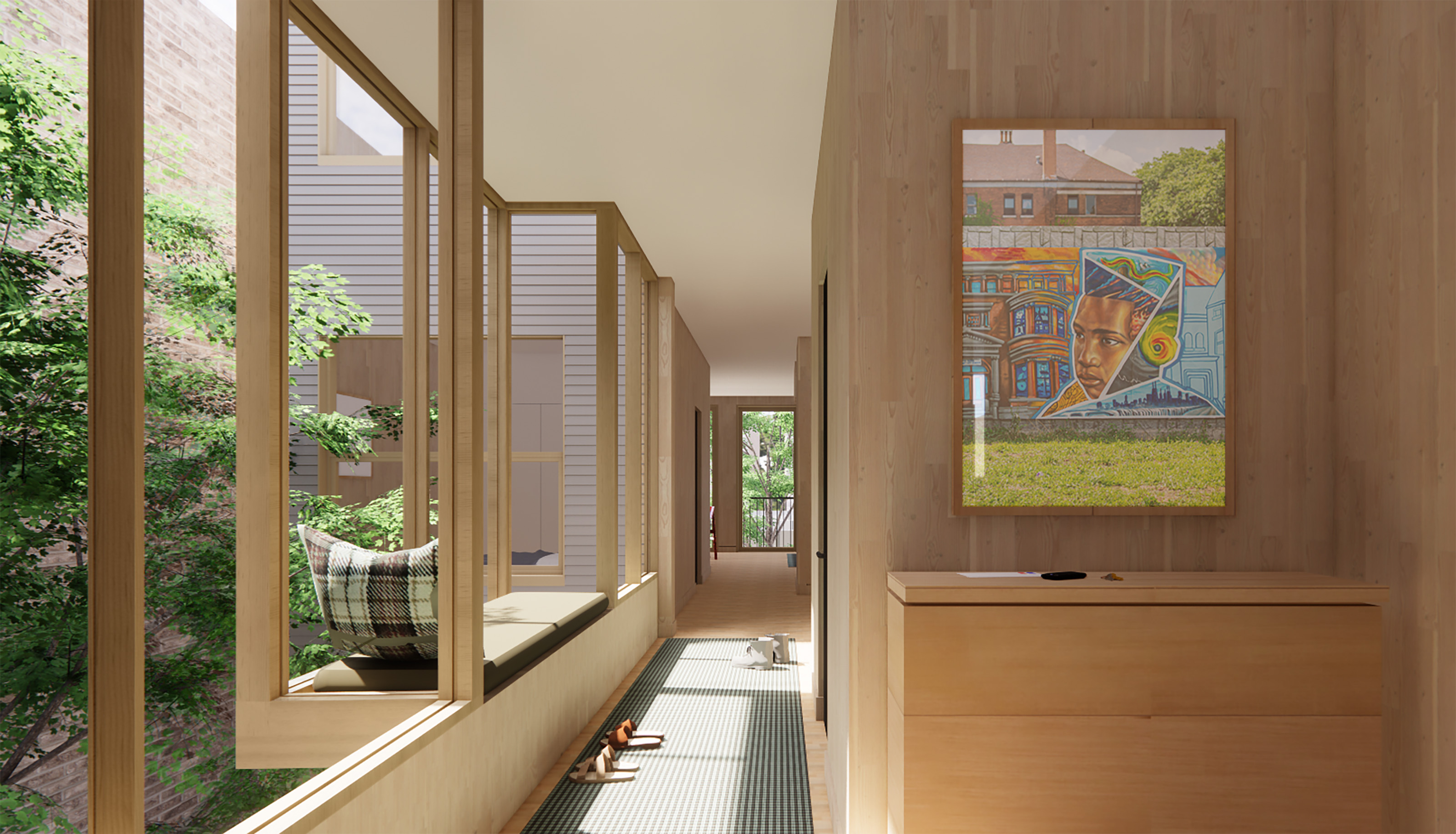"It all started with a blueprint and a dream," recalls Chana Haouzi, an architect transcending the boundaries of architectural possibilities. She is an ardent believer in the power of good design and advocates for making it accessible to all, especially those who need it the most.
Chana Haouzi recently shared her work at the UIC School of Architecture in a lecture titled "Design, with." The talk provided a glimpse into her innovative approach to architectural practice, where collaboration, inclusivity, and redefining the client-designer relationship take center stage.
Embracing "Design, With"
In her lecture, Haouzi introduced the concept of "Design, with," a philosophy that frames her practice's approach to design. At her firm, ‘Architecture for Public Benefit (APB),’ they mainly focus on finding creative ways to serve the public within private practice. The guiding question for them is, "How can we make good design accessible to everyone?" Haouzi's commitment lies in expanding the traditional limits of architectural practice to reach underserved communities and create a more inclusive and borderless public.
A Business Model for a Cause
Architecture for Public Benefit operates as a Benefit Corporation, a business model prioritizing mission alongside profitability. Haouzi's firm deliberately seeks creative partnerships and project funding to extend the reach of architectural practice and serve a diverse public. Their approach challenges the conventional norms of practice, emphasizing just and sustainable models of architecture.
Design Collaboration and Open-Ended Solutions
Haouzi emphasized the collaborative and open-ended nature of design. She views design as a collective effort that thrives in creative environments with partners who listen carefully and collaborate wholeheartedly. "Design, with" encourages questioning the known and pushing the boundaries of what is possible. It calls for using creativity and care to meet community needs, infuse beauty and functionality into solutions, and make a tangible impact on the built environment.
Redefining the Client-Designer Relationship
One of the central tenets of "Design, with" is redefining the dialogue between clients and designers. Haouzi questions who the client truly is and encourages a broader perspective on stakeholder involvement. She challenges the conventional model, where there is a clear distinction between the client, architect, and builder. Instead, she envisions a more fluid approach where clients, architects, builders, and even the public actively participate in design and construction.
Partner Constellations in Design
Haouzi introduced the concept of "partner constellations" in design efforts. This approach involves carefully considering who they are serving, bringing design knowledge to complement architectural experience, and involving the community in the building process. This fluid approach to partnerships fosters meaningful design outcomes.
Realizing "Design, With" in Practice
Chana illustrated the "Design, with" approach through her own projects- Boston Public Library Outdoors, where the project involved reimagining outdoor spaces for library branches by engaging the community in the design process, showcasing the power of collaborative design. In the Chicago Sukkah Design Festival, Chana's team collaborated with interfaith communities to craft a sukkah for combined prayer services, fostering collaboration and mutual understanding among diverse groups. Another project, the YouthBuild Designery, aimed to empower young people with design and construction skills. With that goal in mind, Chana proposed to include a fabrication lab and a public-facing gallery space, creating a bridge between students and the broader design community. Lastly, the Chicago Come Home Initiative focused on developing housing prototypes for vacant lots in Chicago's south and west sides. This initiative resulted in a design emphasizing sustainability, affordability, and scalability, offering a practical solution to a pressing urban challenge.
Chana Haouzi's lecture provided a refreshing perspective on architectural practice. Her commitment to democratizing good design and bold reconfiguration of design collaborations challenges the status quo. "Design, with" is an invitation to expand the conversation within and beyond the field of design, creating an inclusive and innovative future for architecture that everyone can resonate with.




